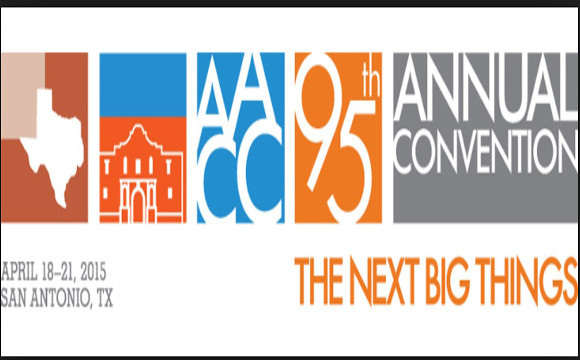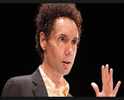What is the human capitalization rate?

At the 95th American Association of Community Colleges Convention in San Antonio, Texas, presenter Malcolm Gladwell inspired the attendees with his viewpoints of why community colleges are important. Using his background as a framework, Gladwell shared the challenges his Jamaican born mother and aunt faced in the 1940’s. He said, “They were 1 of 500 and 1 of 5000 respectively to gain a high school diploma and a college degree.” With a need for good talent in a global economy, the critical questions to be asked are: What is the human capitalization rate, and how can we capitalize on the talent in our society?
 Gladwell is the bestselling author of five books: The Tipping Point: How Little Things Can Make a Difference; Blink: The Power of Thinking Without Thinking; Outliers: The Story of Success; What the Dog Saw: And Other Adventures and David and Goliath: Underdogs, Misfits, and the Art of Battling Giants. Gladwell described the capitalization rate as “the percentage of people in any given situation who have the ability to make the most of their potential.” Despite the odds against them, these people find a way to compensate for their shortcomings.
Gladwell is the bestselling author of five books: The Tipping Point: How Little Things Can Make a Difference; Blink: The Power of Thinking Without Thinking; Outliers: The Story of Success; What the Dog Saw: And Other Adventures and David and Goliath: Underdogs, Misfits, and the Art of Battling Giants. Gladwell described the capitalization rate as “the percentage of people in any given situation who have the ability to make the most of their potential.” Despite the odds against them, these people find a way to compensate for their shortcomings.
For instance, Gladwell noted that there were many children in the community of NFL player Michael Oher who could have potentially played football at the college and NFL levels if afforded the opportunity. Yet, the human capitalization rate for football talent in this community was 16 percent, only 1in 6 children including Oher attended college, said Gladwell.
To provide the attendees a better understanding of why the capitalization rate is low, he provided three assumptions: talent is scarce, talent is innate and people have a narrow definition of what talent is.
Assumption 1: Gladwell said some prestigious educational institutions provide scholarships to disadvantaged students who score in the 90 percentile or above on the SAT, but identify only a few students because they fail to look in the right places and literally think and conclude talent is scare. However, data from economists show thousands of disadvantaged students meet the criteria to attend these schools but are overlooked because they did not attend magnet or college preparatory settings.
Assumption 2: In order to become the best at your craft, Gladwell revealed that you have to have more than innate talent. He said, “You can’t just make it on your own with innate talent. No one gets to be good at what he or she does. You must put in at least 10,000 hours of hard work and have a support system to help you make themost of your potential.” Gladwell gave examples of professional chess players and musicians to argue his points.
Assumption 3: Underestimating talent is a mistake. There are other ways to become good and overcome adversity. Gladwell explained how successful entrepreneurs and NFL quarterbacks respectively compensated for their shortcomings. He said, top business executives such as Charles Schwab and John Chambers were dyslexic as a child and had challenges in reading and writing. However, they learned how to compensate for their disability through communicating effectively with their peers, delegating classwork assignments, problem solving and executing leadership qualities. As result, they became successful in the real-world because they had been applying these practices as a business owner throughout their lives, said Gladwell.
In the NFL, it is difficult to determine if someone is going to be a great quarterback although the NFL provides an IQ test called the Worderlic, said Gladwell. The true results show that the five NFL players who scored the highest on the test performed the worst in the NFL, however. According to Gladwell, “this is another example that there is more than one way to be good. Although it is great to be smart, you still can compensate in other ways to be effective on the field based on your ability.”
Gladwell concluded that what is discovered from the human capitalization rate is that, “As humans, we do a poor job of helping people reach their potential than we think we are actually doing.” Having an understanding of the capitalization rate, we can help more people to become good at what they aspire to do.
Dr. Ronald Holmes, Ph.D. is a former teacher, school administrator, test developer and district superintendent. He is the author of 16 books and publisher of The Holmes Education Post, an education focused Internet newspaper. These books include How to Eradicate Hazing; How to Eradicate Cyber Bullying; How to Eradicate Schoolyard Bullying; and How to Eradicate Workplace Bullying. These books serve as a reference guide to an online anti-bullying program that provides training for all students, parents, employees, and managers. These books are also equipped with a 24 hour Web Based Reporting, Tracking, Training and Documentation System that allow individuals to report bullying incidents anonymously from the home, school, work and community.
Click on this link to see a description of all Dr. Ronald Holmes’ books.

